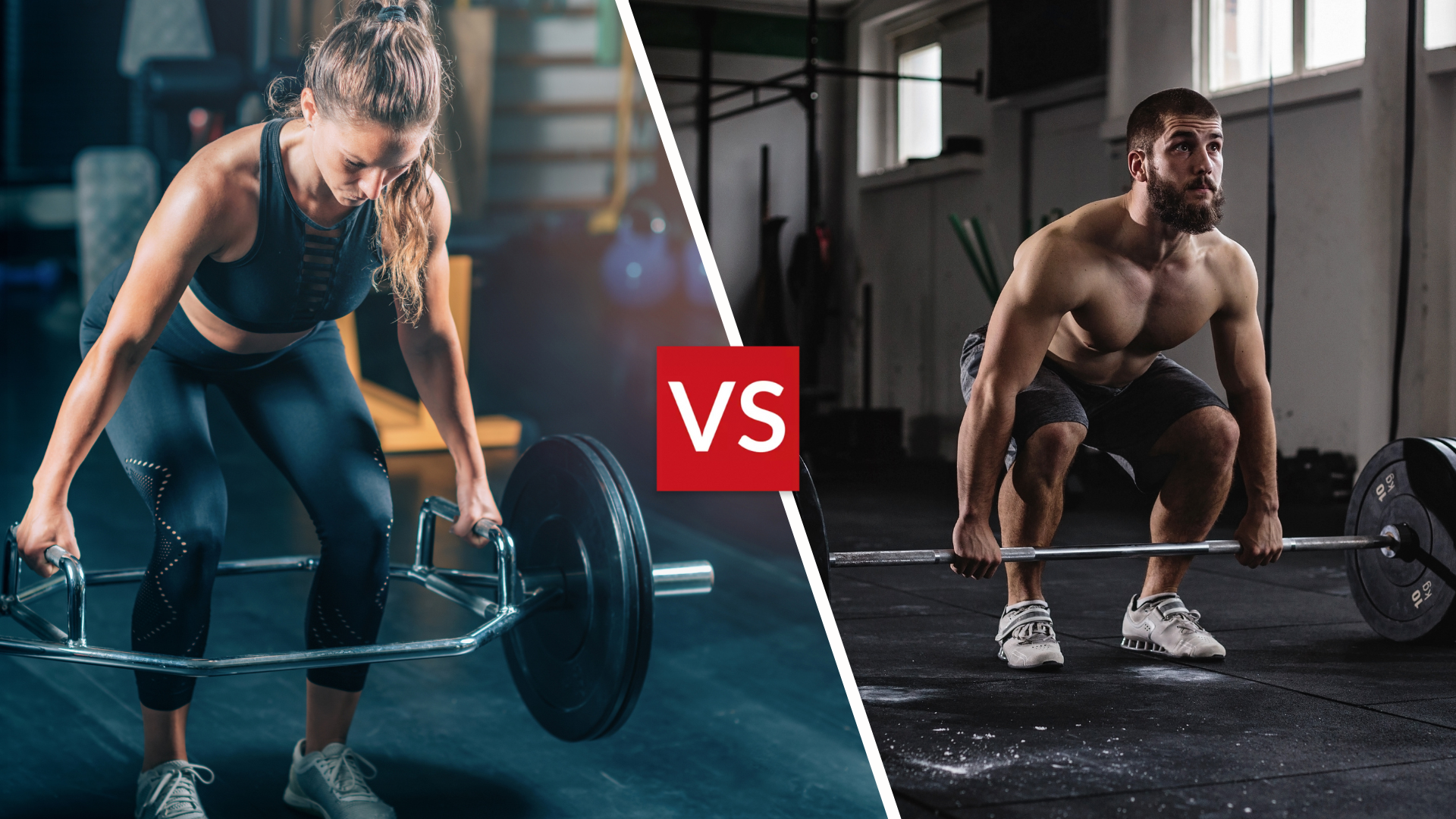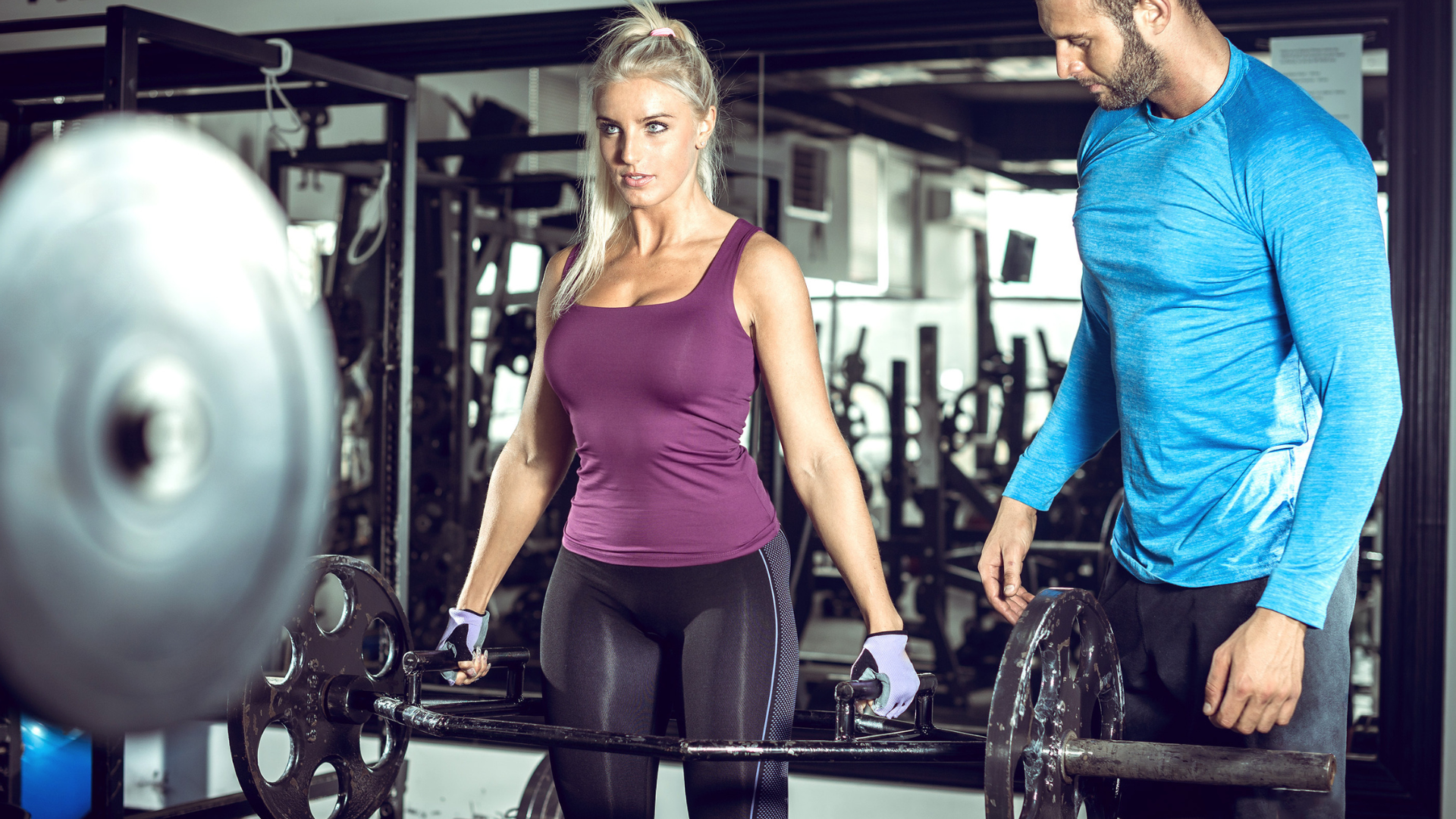

Deadlifts are one of the best compound exercises you can do to build full-body strength, but the debate between whether you should use an Olympic bar to complete the move, or a trap bar has been long standing.
“One of the reasons that some people scoff at the trap bar deadlift is because they think it’s easier than its conventional counterpart, and they’re enamoured with the idea that ‘if the bar doesn’t bend, it’s pretend’," explains Sean Murphy, Certified Personal Trainer and Global Personal Training Director at Ultimate Performance.
Obviously this isn't true, but it does beg the question whether one is better placed in your strength training programme than the other? We explore that very question.
What muscles do deadlifts use?
Deadlifts mainly work your posterior chain (the muscles located on the back of your body), such as the hamstrings, glutes, traps, lats, erector and delts. They also fire up your quads, core, forearms and are a test of grip strength too. However, depending on the positioning of the bar will emphasise the recruitment of particular muscles more.
“Whether you’re doing conventional using a barbell or using a trap bar, deadlifts are one of the best ways to simultaneously improve your overall strength and your cardiovascular endurance,” says Sean.
They're also an excellent functional exercise, as the hip hinge movement of the deadlift is an action you perform daily (think about picking something up off the floor). By performing them, it teaches you how to carry out this movement safely and with good form.
Trap bar deadlift: a closer look

The trap bar deadlift is performed using a hex weight bar and bumper weight plates. You’ve probably either seen people use it in the gym, or it sat in the corner collecting dust.
Sign up to the T3 newsletter for smarter living straight to your inbox
Get all the latest news, reviews, deals and buying guides on gorgeous tech, home and active products from the T3 experts
Using the trap bar allows your body to remain more upright, as you don’t have to bend as far down to the floor as you would to pick up a barbell. This takes a considerable amount of strain off of your back, hips and is far gentler on the joints. “The way a trap bar is designed can really help you keep your form on every rep too,” adds Sean. The trap bar therefore may be an easier exercise to execute, making it an ideal choice for inexperienced deadlifters.
That doesn't mean it's not challenging though, as you can lift far heavier using the trap bar than you would doing a conventional deadlift, making it ideal for maximum lifts. This is down to the fact that you have a much shorter range of motion when using the trap bar, but Sean also says your grip positioning also helps.
“With a trap bar, you adopt a neutral grip, where your palms face each other. This grip naturally gives you a bit more strength and stability, putting less stress on the shoulders. Whereas you’ll find most people deadlifting conventionally need to adopt a mixed grip or use weightlifting straps to stabilise themselves.”
It’s a great for building your legs too, as the trap bar places more emphasis on your quads, therefore if you’re not a fan of squats, it could be a great alternative.
Conventional deadlift: a closer look

The conventional deadlift is the most popular style of deadlift that you will see on the gym floor (there is the sumo, but we’ll save that for another day). It’s performed using a barbell and weight plates and the bar is positioned in front of you on the ground that you then bend down to grab and pull up.
This positioning of the barbell requires good hip mobility as you have to get lower to the ground to grab it and pull it up. It therefore puts a lot more attention on the lower back and your hamstrings than the trap bar deadlift, so if you want to build maximum strength in these areas, it’s excellent.
The caveat, however, is if you don’t have good hip mobility, it can cause you to curve your back to try and reach the bar which can lead to injury. Also, if you suffer from any back or joint issues in general, the conventional deadlift could just exacerbate them.
“Conventional deadlifts also require a good deal of stabilisation to perform correctly, especially if you’re a newbie,” says Sean. Grip strength is tested here and, although it’s more challenging with a conventional deadlift (which is why people try different style grips, such as overhand, mixed and hook grip), it is a great way to improve this.
Also, if you’re looking to do weightlifting competitions, like powerlifting, the conventional deadlift is one of the main lifts, alongside the back squat and bench press, therefore you are better training with this style.
Trap bar deadlift vs conventional deadlift: which is better?
The trap bar deadlift and conventional activate the same muscles, the main difference between the two is where the muscle activation is happening the most. Ultimately, you therefore need to think about your own personal goals and experience with lifting.
If you want to hit your back and hamstrings more, conventional will do this, whereas if you want to hit your quads, then go for the trap bar. "In all honestly, I wouldn’t overthink this though as, for the average lifter, the differences are going to be negligible," says Sean.
Sean also adds that if you're new to lifting, have poor mobility, or suffer from lower back issues, then the trap bar deadlift is probably the best variation to incorporate into your routine.
“As your skills and experience increase, you can progress to the more conventional deadlift and see how your body responds," says Sean. "But, if done correctly, either move is going to be very effective if you want to pack on muscle and get rid of fat, or develop strength.”

Bryony’s T3’s official ‘gym-bunny’ and Active Staff Writer, covering all things fitness. She recently completed her Level 3 PT qualification with the PFCA to bring a deeper understanding of training techniques, fitness trends, and wellness advice to her writing. In her spare time, you will find her in her natural habitat - the gym - where her style of training is a hybrid of bodybuilding and powerlifting. Bryony loves writing about accessible workouts, nutrition and testing innovative fitness products that help you reach your fitness goals and take your training to the next level.
-
 3 overrated shoulder exercises, according to a fitness expert (and what to do instead)
3 overrated shoulder exercises, according to a fitness expert (and what to do instead)Sculpt 3D shoulders whilst minimising injury with these three alternative exercises
By Bryony Firth-Bernard Published
-
 Polar’s new subscription feature lands in the shadow of Garmin’s Connect+ rollout
Polar’s new subscription feature lands in the shadow of Garmin’s Connect+ rolloutPR genius or timing disaster? Polar’s new Fitness Programme adds adaptive training to its ecosystem
By Matt Kollat Published